20 Gorgeous Wildflowers That Thrive in Low-Maintenance Gardens
If you want to add beauty to your garden without the hassle of constant maintenance, wildflowers are a great choice. Many wildflower plants are low-maintenance and thrive in various conditions, making them perfect for easy-care gardens. These plants are not only stunning but also attract pollinators like bees and butterflies, helping to support local wildlife. They are also often drought-tolerant, meaning less frequent watering once they are established. Best of all, most wildflowers come back year after year, adding long-lasting color to your landscape.
This post may contain affiliate links, which helps keep this content free. Please read our disclosure for more info.
Blanket Flower (Gaillardia aristata)
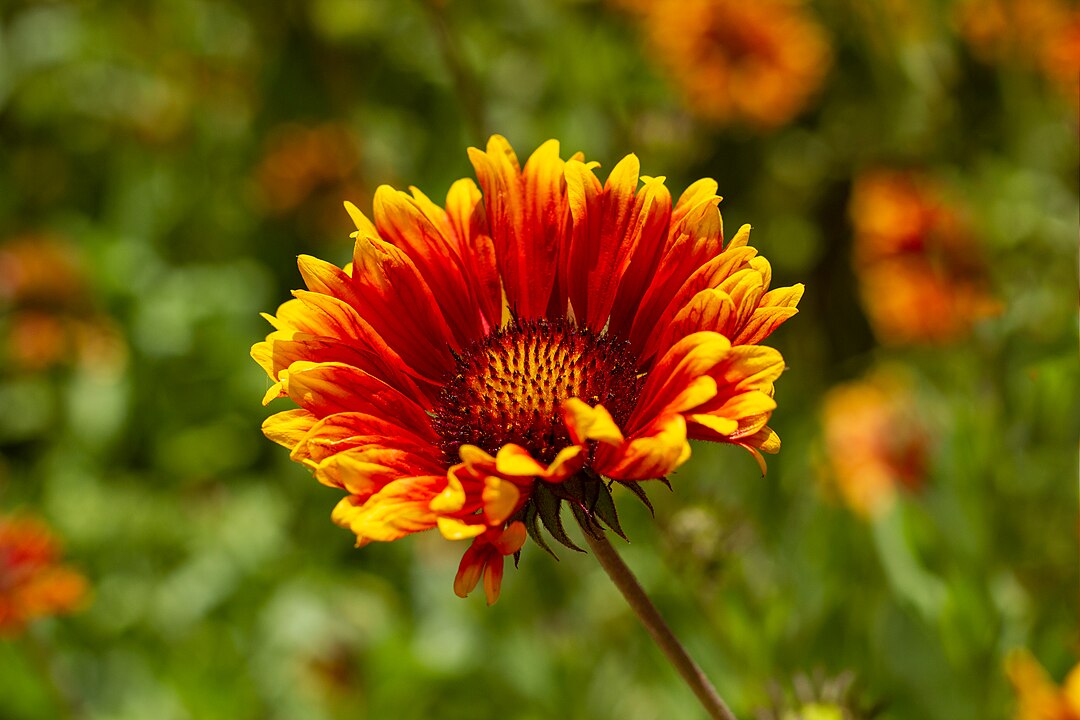
Blanket flowers are beautiful, vibrant wildflowers that offer an array of warm colors like red, orange, and yellow. These plants bloom in the summer and fall, creating a long-lasting display in your garden. They thrive in well-drained soil and full sun, and they can tolerate drought once established.
These plants are perfect for attracting pollinators like bees and butterflies, contributing to the overall health of your garden. Blanket flowers are also low-maintenance and can easily survive with minimal care. Their resilience and striking colors make them a fantastic choice for anyone looking for an easy-to-care-for garden.
Wild Lupine (Lupinus perennis)
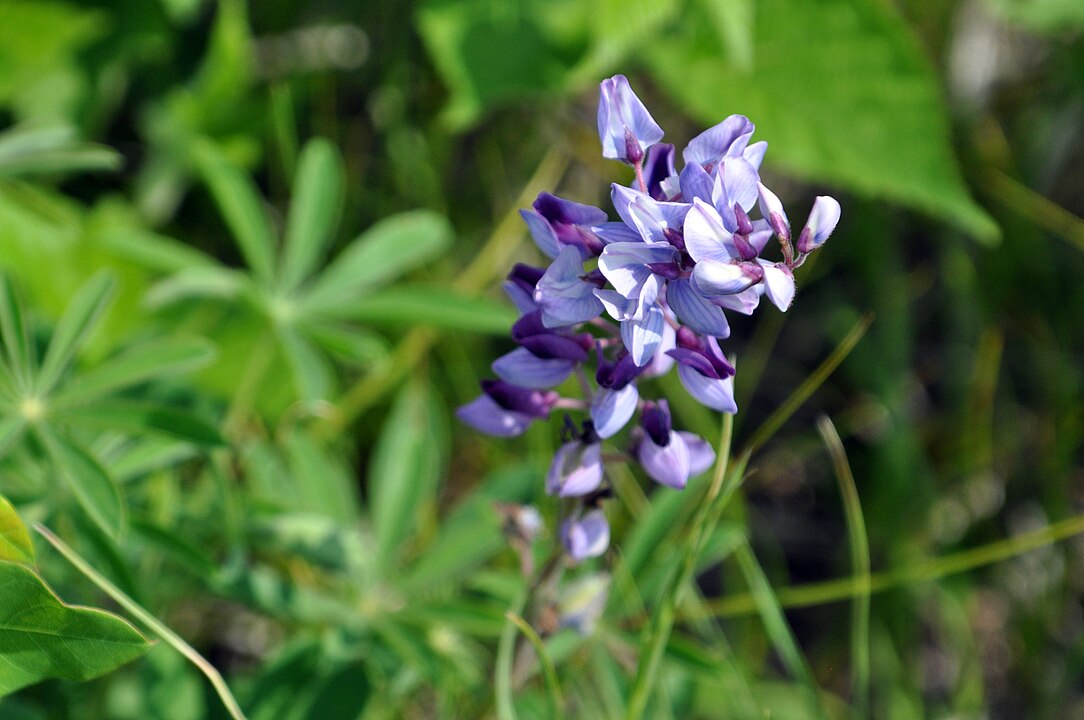
Wild Lupines are native flowers that bloom in spring and early summer, offering stunning spires of purple, blue, or white blooms. These plants thrive in well-drained, sandy soils and are best suited for gardens with plenty of sunlight. They help enrich the soil with nitrogen, benefiting other plants in your garden.
Wild Lupines are perfect for attracting bees and other pollinators, making them an excellent addition to any wildlife-friendly garden. These plants are easy to grow and maintain, making them a good choice for gardeners looking for a colorful and low-maintenance addition to their landscapes.
Bee Balm (Monarda fistulosa)
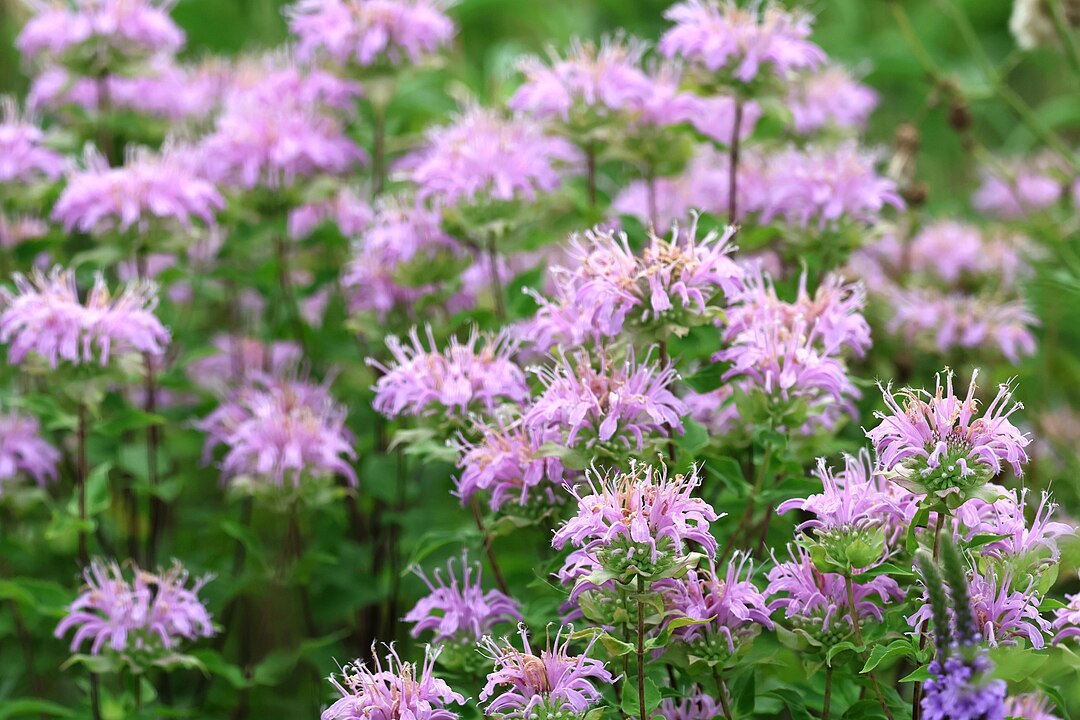
Bee Balm is a fragrant, showy wildflower known for its pink, purple, or red blooms. These plants thrive in moist, well-drained soil and partial sun. They are perfect for gardens with a bit of shade, and they bloom in mid to late summer, drawing in bees, butterflies, and hummingbirds.
Bee Balm is easy to care for and can spread quickly, so it is best to place it in areas where it has room to grow. It is also known for its medicinal properties, often used in herbal teas for its soothing effects. If you want to attract wildlife and enjoy a fragrant garden, Bee Balm is an excellent choice.
Meadow Sage (Salvia nemorosa)

Meadow Sage is a hardy perennial with tall spikes of purple, blue, or pink flowers. These plants thrive in full sun and well-drained soil, making them perfect for easy-care gardens. They bloom from late spring to early summer, adding vertical interest and color to the garden.
Meadow Sage is a favorite of pollinators like bees and butterflies. It also requires little care once established, making it ideal for low-maintenance gardeners. The plants are drought-tolerant and can survive in various soil types, providing beauty and practicality to any garden.
California Poppy (Eschscholzia californica)
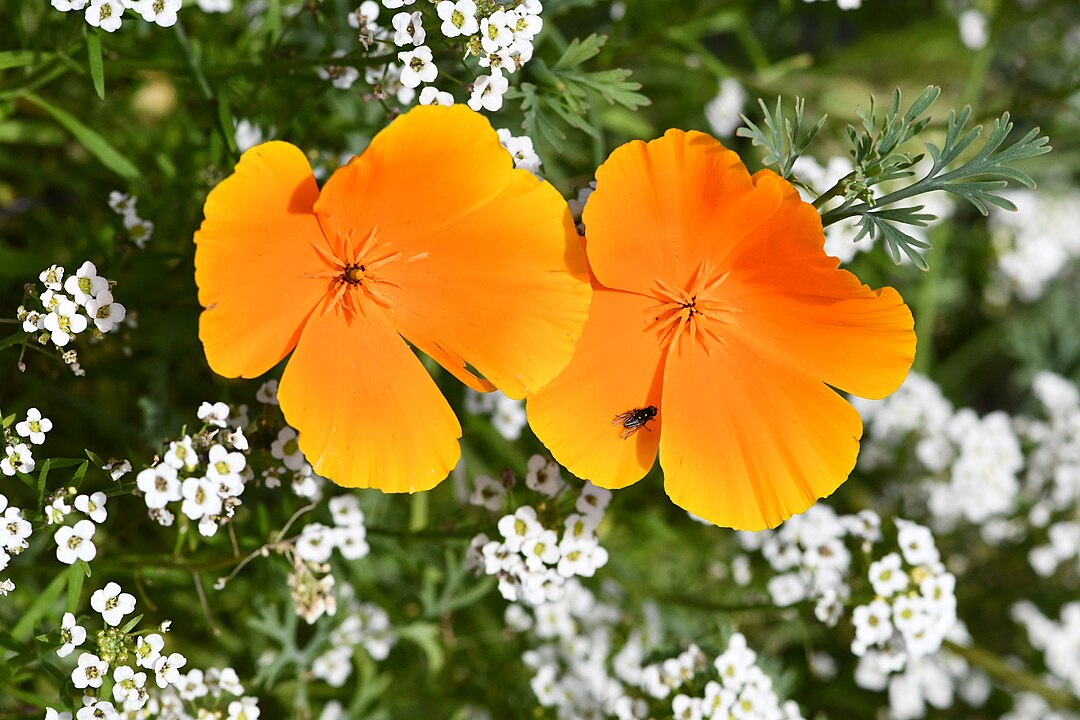
California Poppies are vibrant, orange wildflowers that bloom in spring and early summer. These plants are easy to grow, thriving in full sun and well-drained soil. They are particularly well-suited to dry, low-maintenance gardens and can even grow in poor soil conditions.
Once established, California Poppies require little attention. They are drought-tolerant and self-seeding, which means they will return year after year with minimal care. Their striking color and simple growth habits make them a great addition to any easy-care garden.
Sweet Alyssum (Lobularia maritima)
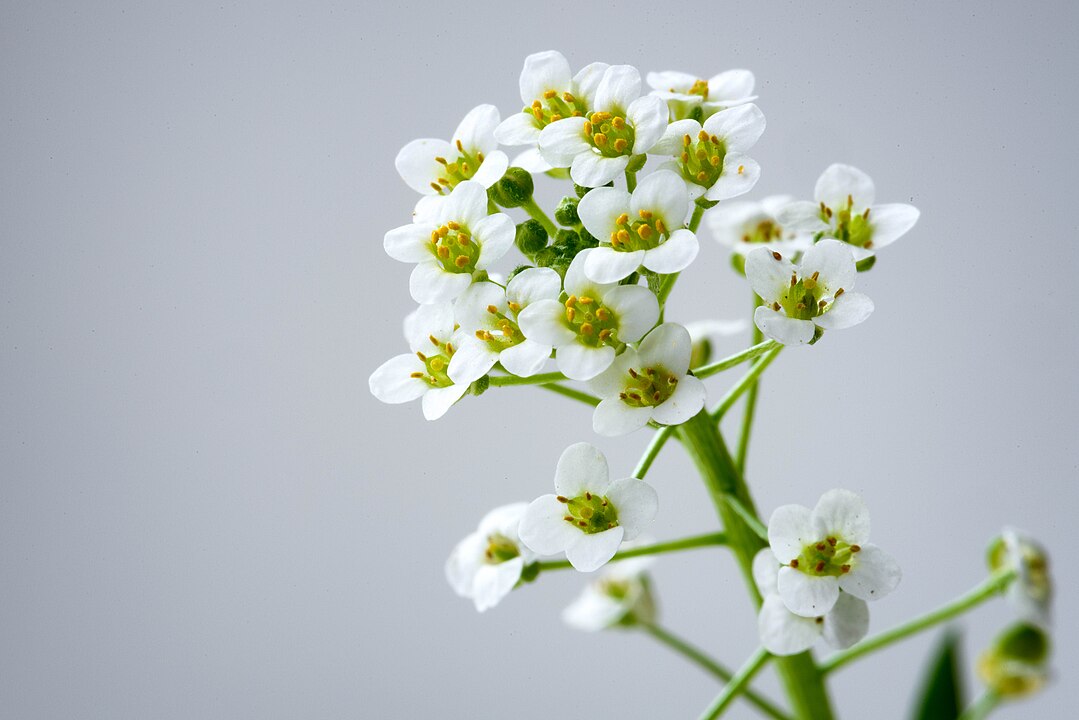
Sweet Alyssum is a low-growing wildflower with small, fragrant white, pink, or purple flowers. These plants thrive in full sun and well-drained soil and are perfect for filling in gaps or edging your garden. They bloom throughout the spring and summer, offering a sweet fragrance that can fill your garden.
Sweet Alyssum is also a favorite of pollinators, attracting bees and butterflies. It is incredibly low-maintenance, needing only occasional watering and deadheading. Sweet Alyssum is perfect for gardeners looking for a fragrant, easy-to-grow flower that adds charm to their garden.
Black-eyed Susan Vine (Thunbergia alata)
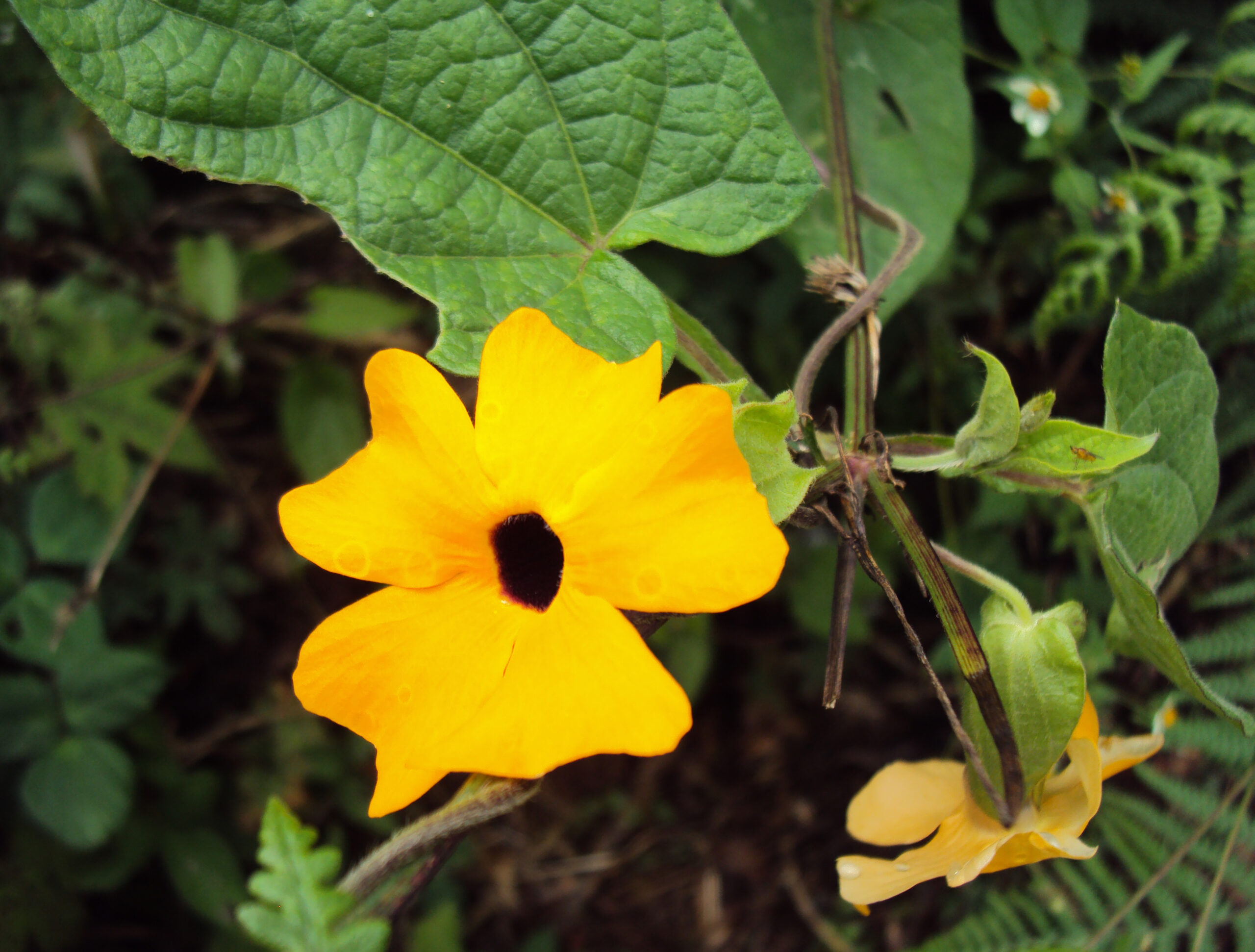
The Black-eyed Susan Vine is a fast-growing, climbing vine with bright orange or yellow flowers and dark centers. These plants thrive in full sun and can tolerate a variety of soil conditions. They bloom from late spring to early fall, making them perfect for extending the color in your garden throughout the summer.
This vine is perfect for adding vertical interest to fences, trellises, or arbors. It is low-maintenance and resistant to most pests and diseases. With its rapid growth and vibrant blooms, the Black-eyed Susan Vine is a great way to add beauty with minimal care.
Wild Ginger (Asarum canadense)
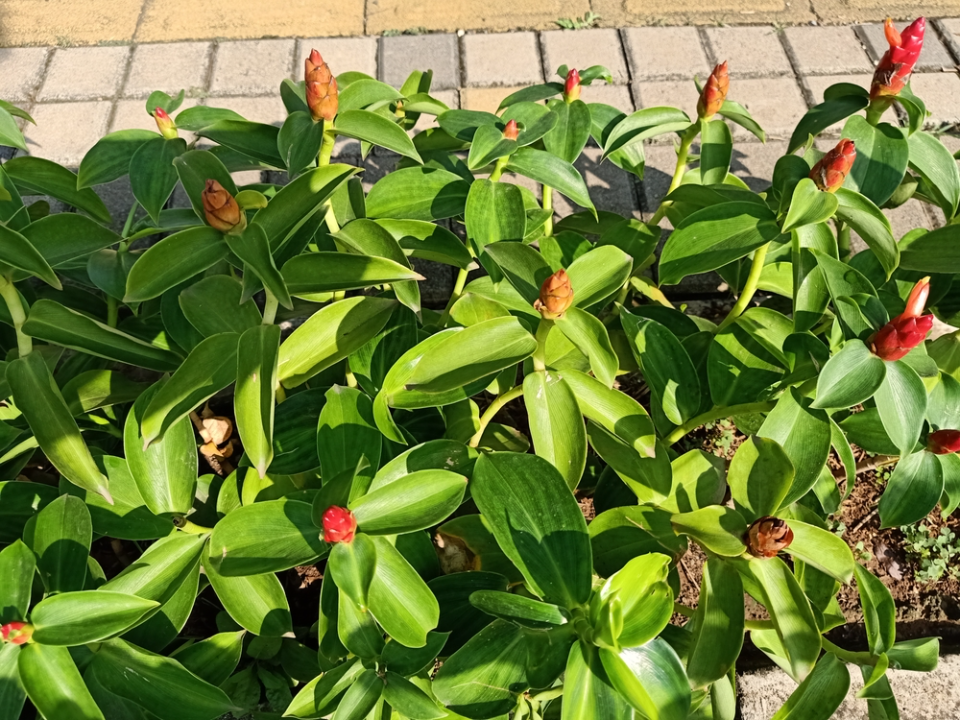
Wild Ginger is a low-growing, shade-loving plant that produces unique, maroon flowers hidden beneath its heart-shaped leaves. It thrives in moist, well-drained soils and works well in woodland or shaded garden areas. These plants spread slowly, creating an attractive ground cover in shaded corners of your garden.
Once established, Wild Ginger is very low-maintenance and can grow year after year without much attention. The plant’s unique flowers add interest to your garden, and its dense foliage provides a lush, green backdrop. Wild Ginger is an ideal choice for gardeners seeking a low-maintenance, shade-tolerant plant.
Purple Prairie Clover (Dalea purpurea)
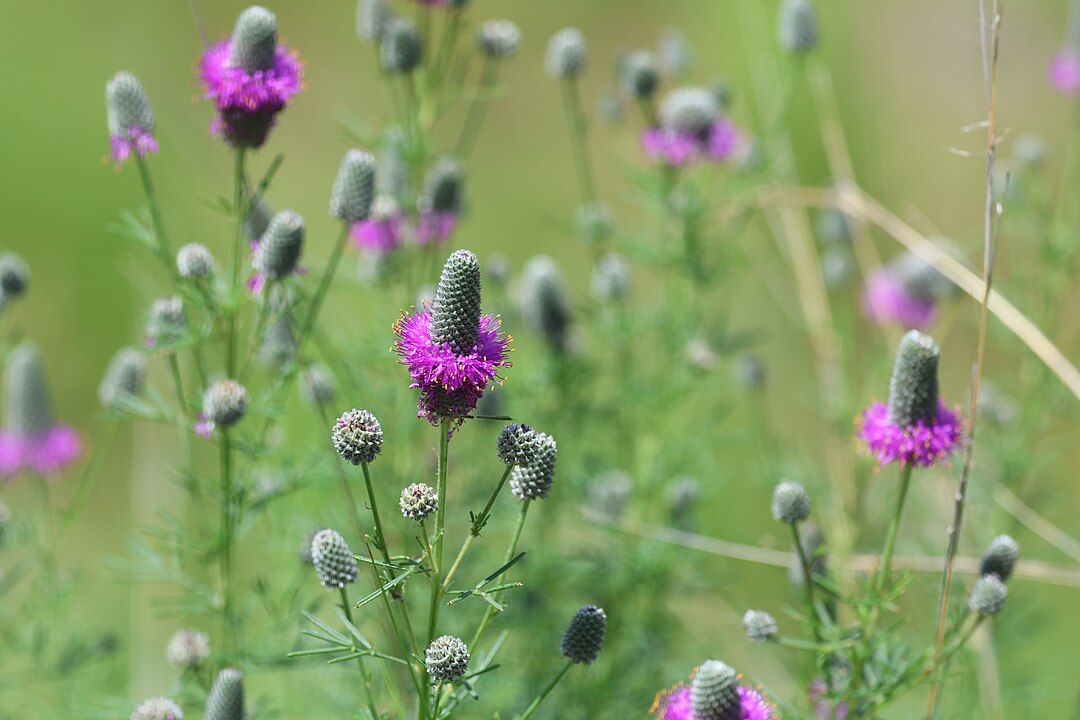
Purple Prairie Clover is a tall wildflower that produces striking purple, cylindrical flowers. These plants thrive in full sun and well-drained soil, making them ideal for prairie-like or low-maintenance gardens. They bloom in late spring to early summer, attracting a wide range of pollinators.
This wildflower is drought-tolerant and can handle poor soil conditions. Once established, Purple Prairie Clover requires little maintenance, making it perfect for gardeners who want a hardy, beautiful addition to their landscape. It’s particularly effective in attracting bees and butterflies, making it a good choice for wildlife-friendly gardens.
Butterfly Weed (Asclepias tuberosa)

Butterfly Weed is a vibrant orange wildflower that attracts pollinators, particularly butterflies. These plants thrive in full sun and well-drained soil, and they bloom from late spring to early summer. Butterfly Weed is drought-tolerant and does not require much attention once established.
This wildflower’s bright color and ability to attract pollinators make it an excellent choice for wildlife gardens. It is also easy to grow and can thrive in poor soil conditions. Butterfly Weed is a great option for gardeners looking to support local wildlife while adding color to their garden.
Black-eyed Susan (Rudbeckia hirta)
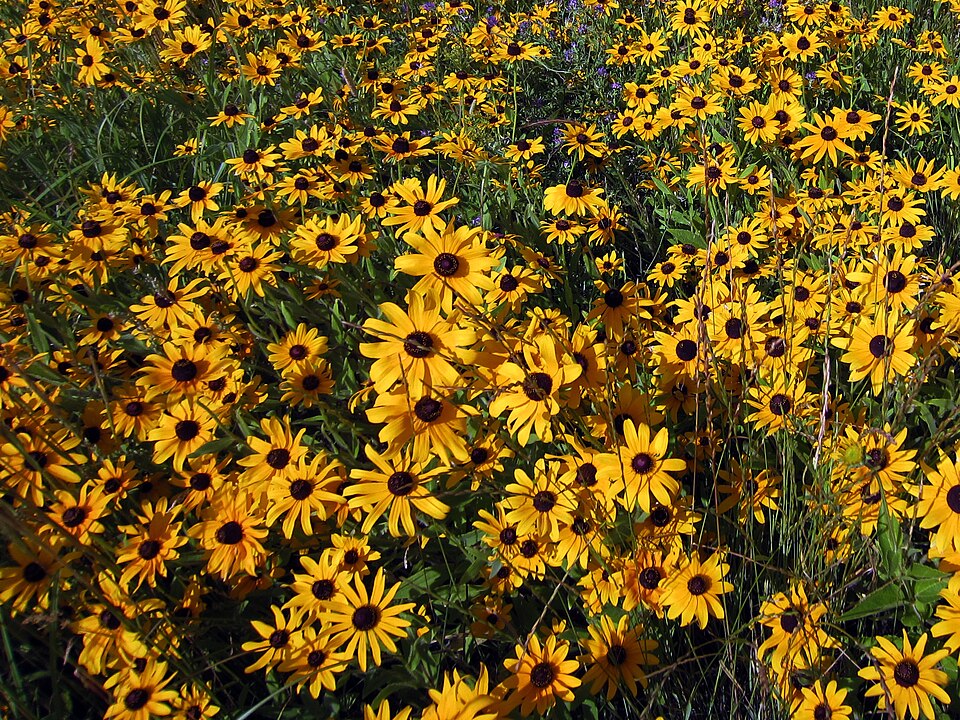
Black-eyed Susans are native to North America and are known for their bright yellow petals and dark centers. These flowers thrive in full sun and tolerate various soil types, making them an excellent choice for a low-maintenance garden. They bloom from early summer to fall, attracting pollinators like bees and butterflies.
These plants are also drought-tolerant, so they do not require constant watering once established. Their ability to spread and reseed naturally means that you do not have to worry much about replanting each year. With their cheerful appearance, Black-eyed Susans can easily become a focal point in your garden, giving it a vibrant touch.
Purple Coneflower (Echinacea purpurea)
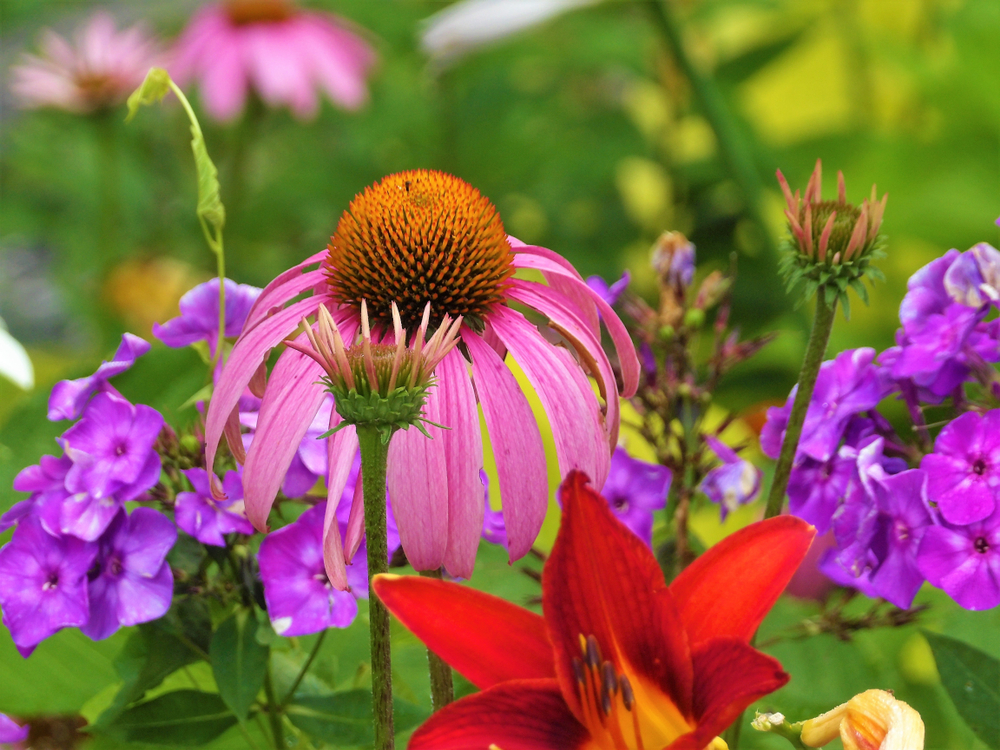
Purple Coneflowers are striking wildflowers with purple petals and a prominent orange center. They are known for their ability to tolerate poor soil and hot weather, making them ideal for gardens that require minimal attention. These flowers bloom in mid to late summer, offering color and texture for several weeks.
Not only do they add beauty to your garden, but Purple Coneflowers are also medicinal plants. They have been used for centuries to support the immune system and combat colds. They attract pollinators such as bees and butterflies and are deer-resistant, making them a great option for any garden.
Common Milkweed (Asclepias Syriaca)

Common Milkweed is a native perennial that produces large clusters of pink or purple flowers. These plants are best suited for full sun and well-drained soils. They bloom from early to late summer, offering a long-lasting display of color while attracting pollinators such as monarch butterflies.
Milkweed plants are easy to grow and maintain once established. They are tolerant of drought and require minimal care. As a food source for monarch caterpillars, Common Milkweed plays an essential role in supporting local wildlife. If you want a low-maintenance plant that supports biodiversity, Milkweed is an excellent choice.
Evening Primrose (Oenothera biennis)

Evening Primrose is a tall, upright wildflower that produces large, yellow flowers that bloom in the evening. These plants are well-suited for full sun and well-drained soils. They bloom from late spring to early fall, adding color and texture to the garden during the warmer months.
These flowers are easy to grow and care for, making them perfect for low-maintenance gardens. Evening Primrose is drought-tolerant and can handle a variety of soil types. The plant’s ability to thrive in poor conditions and its ability to attract pollinators make it a valuable addition to any garden.
Wild Columbine (Aquilegia canadensis)
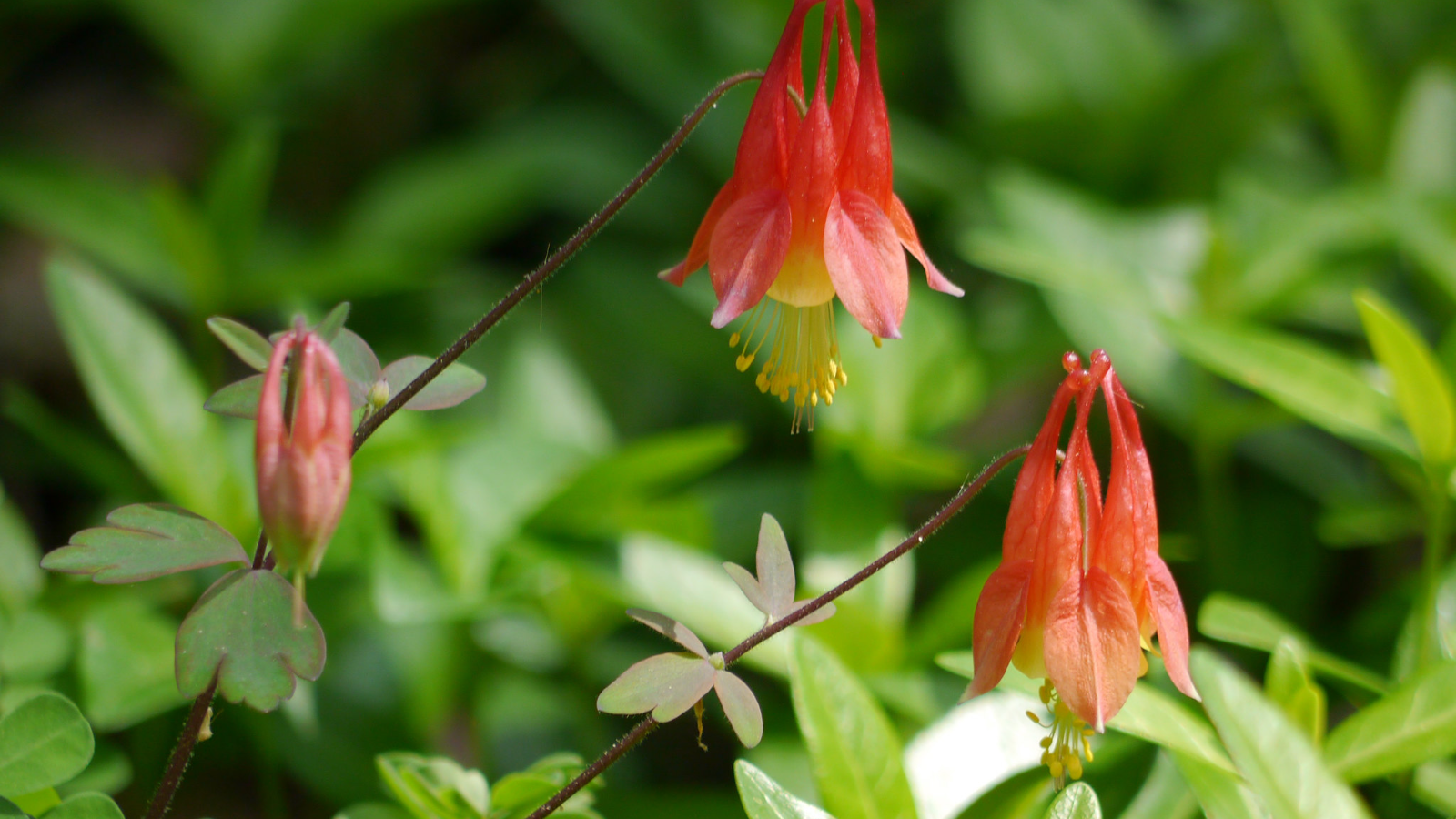
Wild Columbine is a delicate wildflower with unique red and yellow flowers. These plants are perfect for woodland or shaded gardens, as they thrive in partial shade and well-drained soils. They bloom in early spring to early summer, providing early-season color to your garden.
Wild Columbine is easy to grow and requires little maintenance once established. It is a favorite of hummingbirds, making it a great choice for wildlife gardens. With its delicate flowers and shade tolerance, Wild Columbine adds beauty and variety to your garden with minimal care.
Goldenrod (Solidago canadensis)
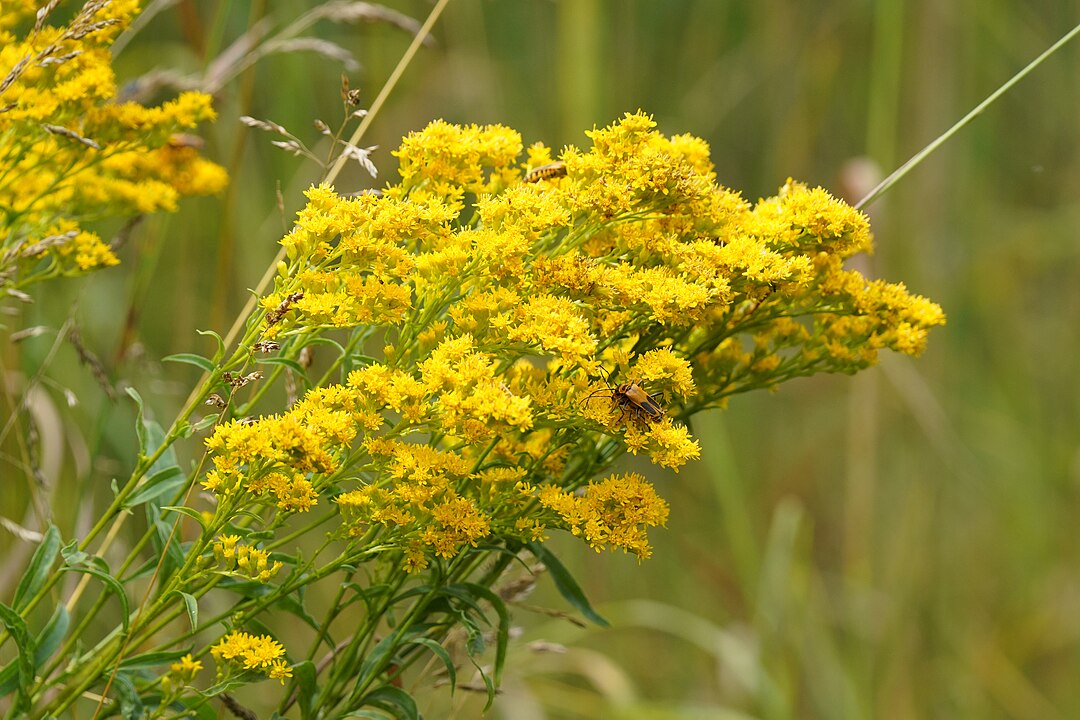
Goldenrod is a perennial wildflower known for its tall, golden-yellow spikes that bloom in late summer to fall. These plants thrive in full sun and well-drained soil. They attract a variety of pollinators, including bees, butterflies, and birds, making them an excellent addition to any garden focused on wildlife.
Goldenrod is easy to grow and requires little attention once established. It is drought-tolerant and can handle a variety of soil conditions, making it perfect for low-maintenance gardens. This wildflower’s bright color and ability to attract wildlife make it a valuable plant for your garden.
Lupine (Lupinus polyphyllus)
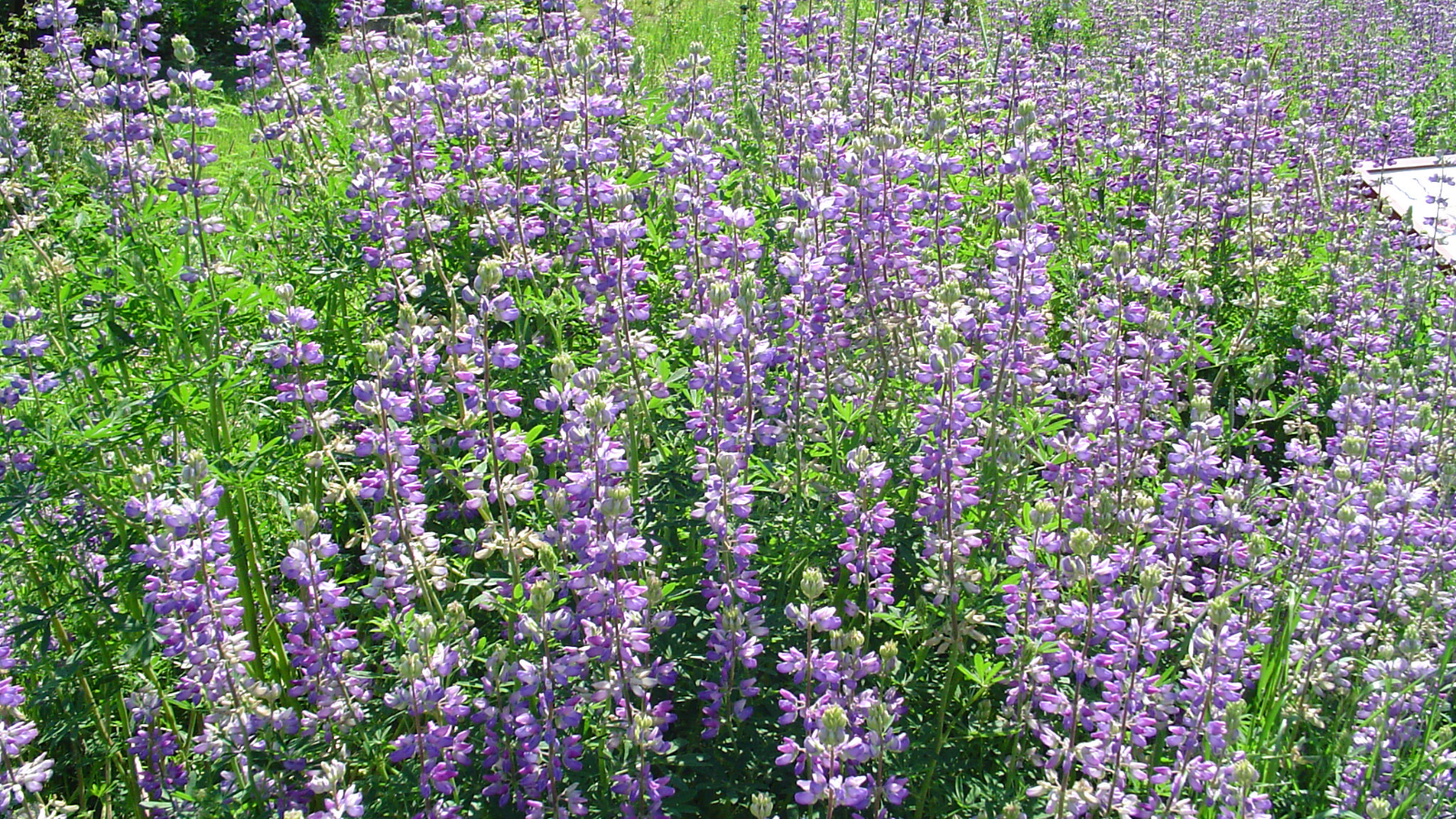
Lupines are vibrant wildflowers that produce tall spikes of blue, purple, or pink flowers. These plants thrive in full sun and well-drained, slightly acidic soil. They bloom in late spring to early summer and are an excellent choice for adding vertical interest to your garden.
Lupines are easy to care for and can thrive in poor soil conditions. They attract pollinators like bees and butterflies, making them a great option for wildlife gardens. Their striking flowers and ease of growth make them a perfect addition to any easy-care garden.
Red Hot Poker (Kniphofia uvaria)
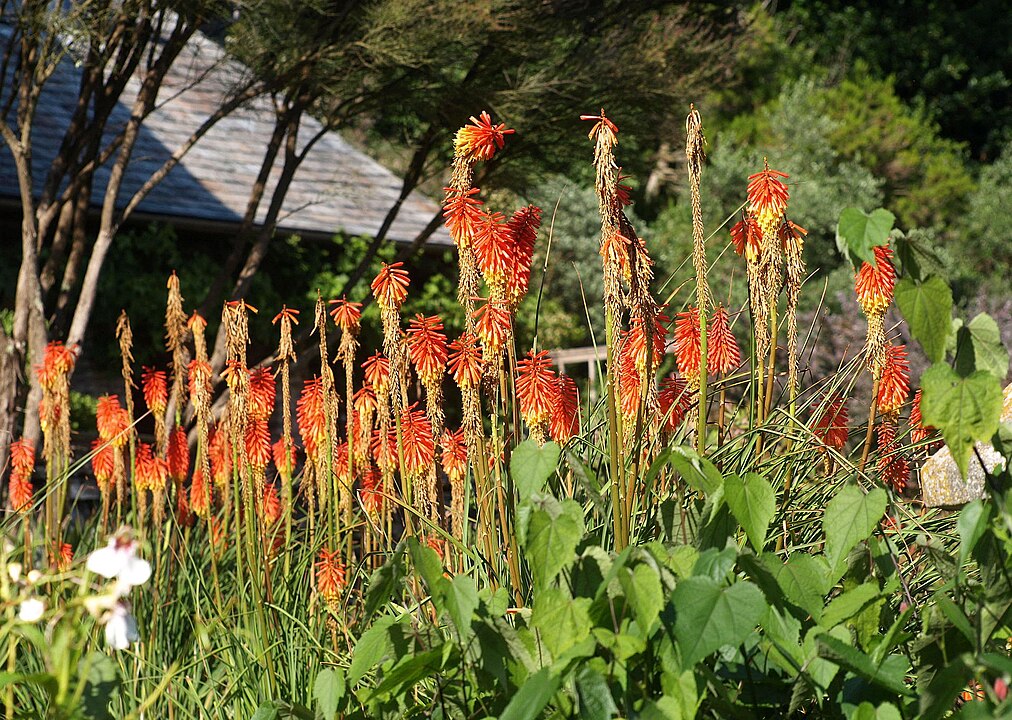
Red Hot Poker plants are known for their tall, striking flower spikes that range in color from red to orange and yellow. These plants thrive in full sun and well-drained soil, making them a good choice for dry or low-maintenance gardens. They bloom in late summer to fall, offering a vibrant burst of color when other plants are starting to fade.
These plants are easy to grow and require little care once established. They are drought-tolerant and can handle poor soil conditions, making them perfect for a low-maintenance garden. The plant’s bright flowers and ability to attract pollinators like hummingbirds make it a valuable addition to any garden.
Autumn Joy Sedum (Sedum ‘Autumn Joy)

Autumn Joy Sedum is a hardy, low-maintenance plant that produces large, pinkish-red clusters of flowers in late summer to fall. These plants thrive in full sun and well-drained soil. They attract bees and butterflies and add a pop of color when other flowers are beginning to fade.
Once established, Autumn Joy Sedum requires little care and can tolerate drought and poor soil conditions. Its ability to thrive in harsh conditions makes it perfect for gardeners seeking an easy-to-care-for plant. This wildflower provides seasonal interest and is an excellent choice for any garden.
Indian Blanket (Gaillardia pulchella)

Indian Blanket is a colorful wildflower that blooms in a mix of red, yellow, and orange shades. These plants are perfect for full sun and well-drained soil, where they bloom from summer to fall. They attract pollinators like bees and butterflies and make a bold statement in your garden.
Indian Blanket is drought-tolerant and low-maintenance, making it ideal for dry, sunny spots. These flowers reseed themselves naturally, ensuring that they will return year after year with minimal care. If you are looking for a bright, easy-care flower to add to your garden, Indian Blanket is an excellent choice.
This article originally appeared on Avocadu.
